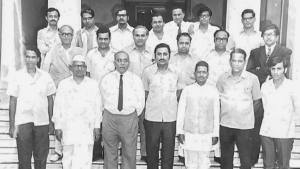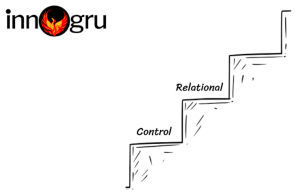Picture this: A young entrepreneur, let’s call him Arjun, sits in the polished boardroom of his family business, flipping through old photo albums. His grandfather stands proudly in front of a tiny shop, wearing a simple kurta and a grin that speaks of countless sleepless nights, hustling to make ends meet. Next to it, a more recent picture of his father—now a successful businessman—shaking hands with clients at a corporate event.
Arjun, born into this lineage, has been handed a business that’s not just surviving, but thriving. Yet, something feels off. While he’s grateful for the legacy, he can’t shake the nagging feeling that he’s missing out on the grit, the sweat, the ground-up struggle that shaped the family story. This is the identity crisis that so many second and third-generation entrepreneurs face today—a complex desire to build their own legacy while inheriting the weight of an existing one.
Experiencing “The Struggle” vs. Scaling
What Arjun longs for isn’t just success—it’s the satisfaction that comes from creating something out of nothing like his grandfather did. But his reality is different. The challenges he faces are about scaling, not surviving. While his grandfather worried about securing capital to stock the shelves, Arjun is navigating the complexities of global supply chains, market expansions, and digitization.
This dichotomy is where the identity crisis takes root. Arjun wants to prove that he’s capable of starting from scratch, of grinding his way up like the generations before him. At the same time, dismantling an empire only to build it back up doesn’t make sense—he’s smarter than that.
In reality, the struggle that earlier generations faced is just different now. Today’s entrepreneurs have to battle fierce competition, technological disruption, and rapid market changes, none of which are any less formidable than starting with nothing.
The Pressure to Modernize and Innovate
Another layer to this crisis is the pressure to modernize. Arjun doesn’t just want to maintain the family business—he needs to innovate, scale, and future-proof it. Here’s the irony: while earlier generations were celebrated for their resilience in building something, today’s success stories are rooted in transforming businesses. Arjun isn’t stuck in his father’s or grandfather’s era, where survival was the goal. He’s playing a different game, and he’s forced to rewrite the rules.
One crucial question he has to wrestle with is this: How can I maintain the spirit of innovation and grit that built this company, while still respecting the foundation that was laid for me?
Bridging the Identity Gap
The solution to this identity crisis isn’t to relive the past but to honor it while embracing the present. Arjun doesn’t need to experience the same hardships his forefathers did. His battles—like global market fluctuations, digital revolutions, and employee retention—are equally challenging, though different in nature.
Instead of feeling guilty for not having “built from scratch,” second and third-generation entrepreneurs can frame their role as caretakers and innovators. Their job isn’t to endure the same struggles but to solve the modern problems of scaling, growth, and transformation.
The Key Takeaway
Your worth as a second or third-generation entrepreneur isn’t defined by how closely your story mirrors your predecessors’. It’s about recognizing that your struggles—though different—are just as valuable and necessary. You’re not just maintaining a legacy; you’re writing the next chapter. And that chapter is about scale, innovation, and taking the business further than your forefathers could have ever imagined.





